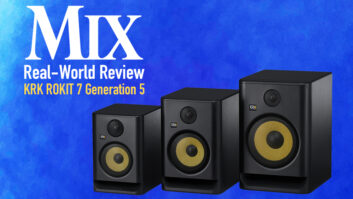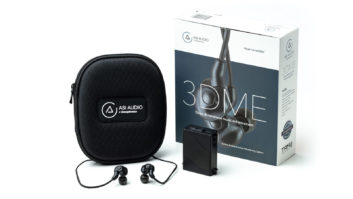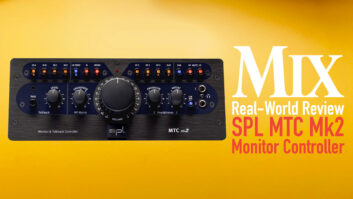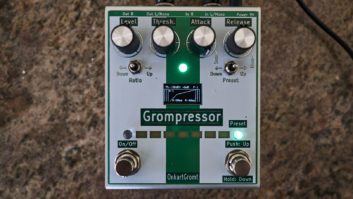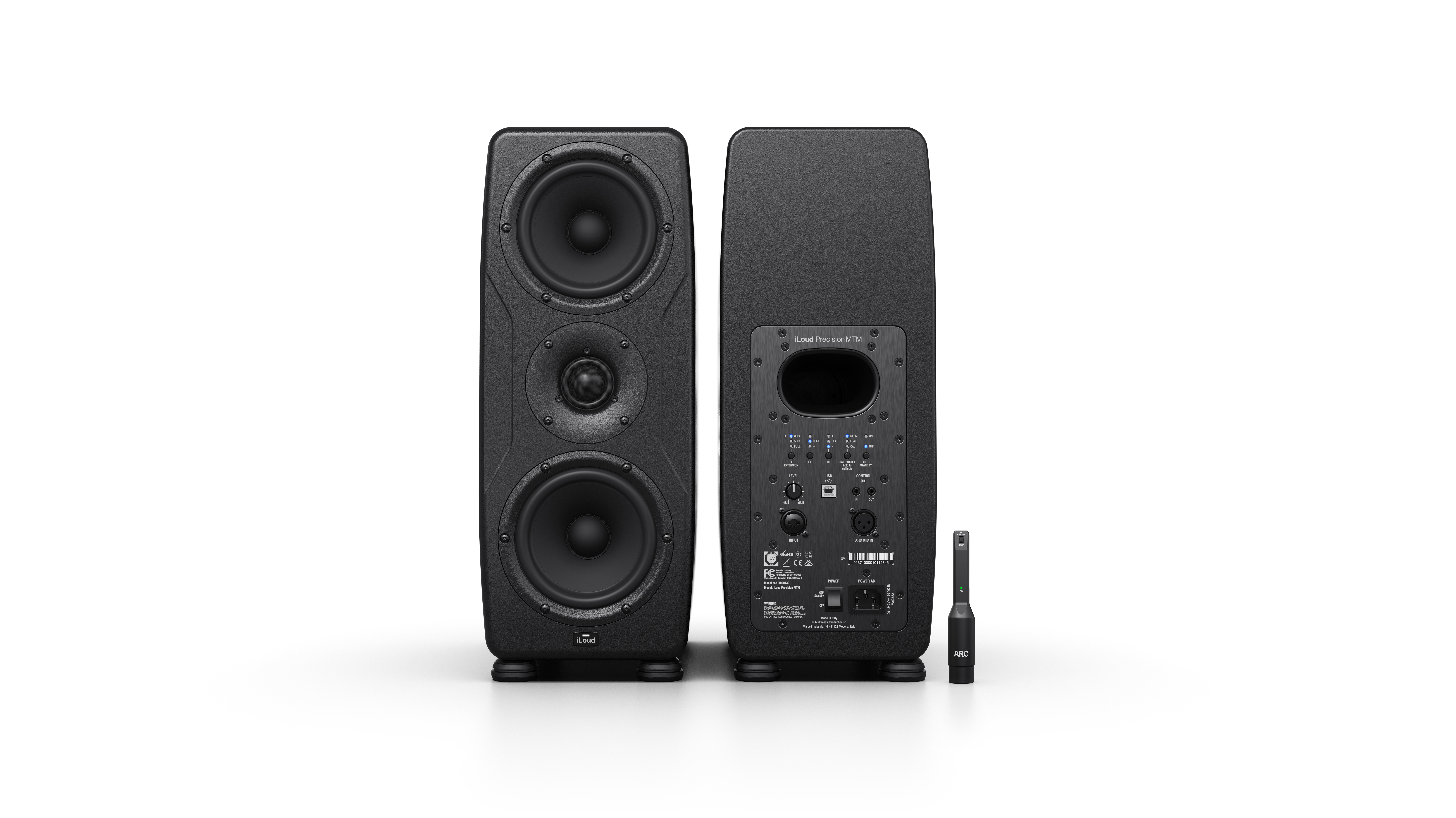Traditionally, monitoring didn’t have to be convenient or portable or multifunction; it just had to sound good, period. Today, active monitoring is much easier to use, portable designs have become necessary for all sorts of pro audio on-the-go applications and a variety of network/wireless functions can be found on both professional and consumer monitors and speakers. The new LSX monitors from KEF, then, appear to aim squarely at the intersection between pro and consumer (prosumer, if you will). They satisfy both camps, with app-driven operation, professional performance and an emphasis on convenience for all parties.
The two-way, active, biamped, time-aligned LSXs incorporate Wi-Fi interconnectivity and networking, wireless Bluetooth connection, wireless remote control, analog and digital inputs, high sample rate operation and subwoofer capability, and the typically cumbersome interconnection cable between monitors is optional (more on that).
The wireless and networked LSXs have an 1/8-inch stereo mini-plug analog input and a Toslink optical connection that allows high sample rate input and playback. There is an Ethernet connection on each speaker and an Ethernet cable is provided with the kit, but the cable is only used for interconnection during firmware updates and high sample rate operation in Cable Mode. In a welcome nod to home theater enthusiasts and gamers, the LSXs have a subwoofer out (switchable, variable crossover and level) on an RCA jack.
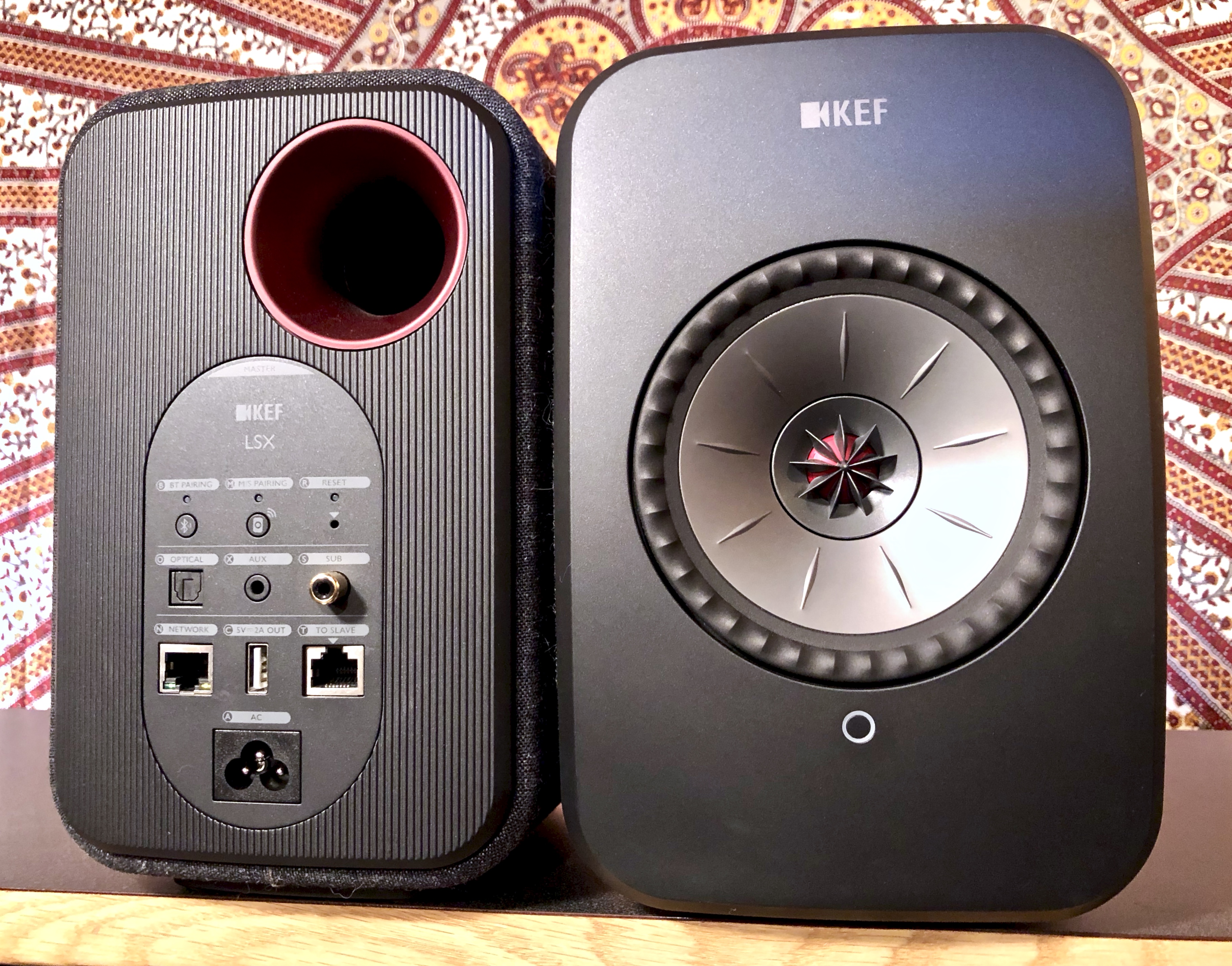
The LSXs have 19 mm (0.75-inch) aluminum dome tweeters and 115 mm (4.5-inch) aluminum/magnesium alloy low-mid drivers, with 100 watts driving them (70 low and 30 high) and an overall timbre that’s more flat and neutral than a typical curvy consumer-ish balance.
Related: KEF Introduces LSX Speakers, by Katie Makal, Nov. 1, 2018
Bluetooth class 2 is supported with a 10-meter range, up to eight devices stored in memory and 2.5 mW of power. Wi-Fi is of the dual-band 2.4/5 GHz variety, so you’ll need an appropriate router for the speakers to not only talk to each other (at 24-bit, 48 kHz), but also to optionally draw input signal from your home/studio network as well. The LSXs can accept up to a 192 k signal input (via Toslink) and can operate at 24-bit, 96 k in Cable Mode while using the aforementioned Ethernet cable.
As if this weren’t enough convenience, the LSXs also come bundled with apps for ease of listening. Apple’s AirPlay2 allows integration into a home’s multiroom audio setup, with Tidal and Spotify Connect to complete a triumvirate of major streaming options.
I started my evaluation with an unboxing that grabbed my attention, as I discovered a solid weight to each speaker and an included note from KEF to not grab the speakers by the front driver when unpacking (I’ve never poked out a tweeter like this, but I’ll bet many have).
Setup is a very specific (and, frankly, cumbersome) process that requires peripherals and your attention. It starts with getting the KEF Control app for your phone, getting on your dual-band Wi-Fi network (yes, modern monitors now require cellphones and digital infrastructure) and initializing the system. From the app or the provided remote control, you can select your input source (Wi-Fi, Bluetooth, optical or the analog jack), control volume, mute and have minimal streaming transport control (play/pause, next/back). The app contains a Basic mode, but you’ll want the Expert mode to control Desk mode (low mids), Wall mode (bottom end), Treble trim, Phase Correction (which digitally helps clean up phase error at the crossover point) and Bass Extension (less, standard, extra). Your settings are savable, nameable and recallable for numerous useful options.
The Kvadrat fabric on the cabinet sides and top is worth a mention, as its novelty kind of threw me off at first, but it looks very nice in the studio and with home decor. It may be reflection-minimizing, but I think it may also prove to be a long-wearing and a little-cleaning solution as well. It did not attract cat/dog hair or gather excessive dust, and was cleanable with a vacuum attachment.
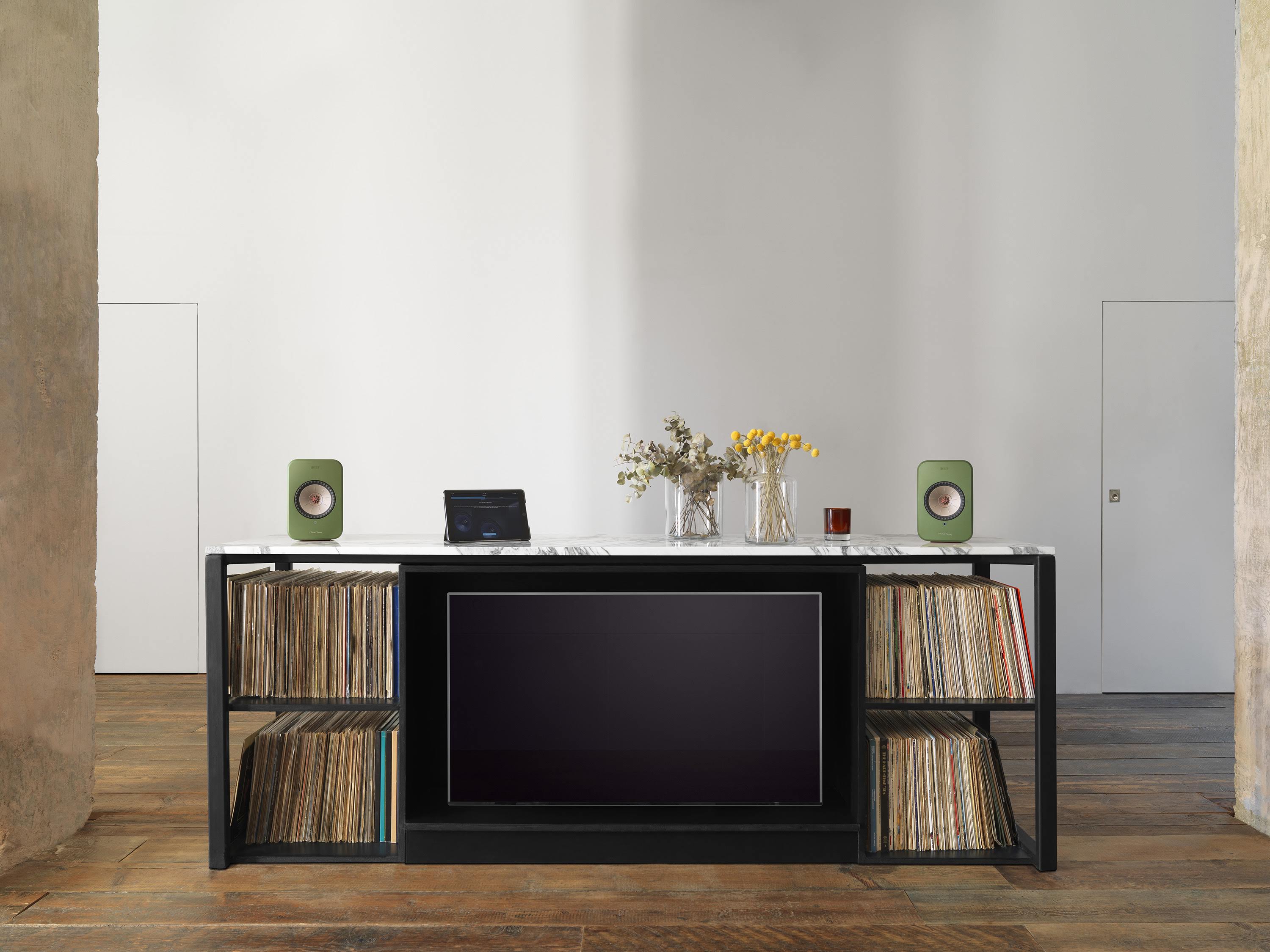
Okay, so they look cool, feel cool and have every modern convenience—but do they sound good? Yes, surprisingly good.
First of all, the point-source concentric woofer/tweeter arrangement makes for some accurate imaging and a very wide sweet spot. KEF boasts of its uniformity frequency-response wise as you move laterally, and it’s not kidding. That might not be so useful if only one person is listening, but it’s quite important if there’s two or more people squeezed into the sound field, trying to make decisions (or, alternately, if everyone in the living room wants to hear a movie’s dialogue).
Related: KEF LSX Review, by What Hi-Fi?, Nov. 29, 2018
The sonic balance is surprisingly flat for a monitor that seeks to please consumers as well as pros, without any particular frequency ranges accented or hyped. There’s no upper-mid forwardness, no mid-range bumps (ok, maybe a couple of dips), none of the scratchy 10 k-ness that aluminum tweets sometimes make. It’s just a little thuddy in low-end definition and there’s some extra low-mid girth, but I’m being quite critical. These are trustworthy, accurate monitors that you can mix on.
Once I realized this, I cynically thought, “Yeah, but I’ll bet you can’t fill the room with 4-inch woofers” as I cranked up the LSXs, slowly waiting for either warning lights, woofer splat or ugly, strained resonances. I found none of the above as I turned them back down to preserve their health and my hearing. Their “sound pressure-to-size” ratio is quite high, on par with the loudest I’ve heard.
I moved the LSXs up into the living room and they were even more comfortable there. They looked good on small stands by the big screen TV, and the lack of visible cabling delighted the wife. When she was out of town on business for a few days, I hooked up my old Sony subwoofer to the LSXs and enjoyed some sci-fi, horror and action flicks with an abundance of bottom end that was way over the top, as the LSXs already provided enough for me sans sub. I found the overall flatness to allow non-fatiguing, long-term (binge) listening, and the even dispersion nicely filled the room with even coverage. However, using the Toslink inputs to get audio from my TV yielded a slight signal delay that threw off sync. Further testing with a pro-level Toslink device revealed the issue was with my TV (and that’s not an uncommon issue, according to KEF). Bluetooth connectivity sure made it convenient for the whole family to send audio to the LSXs from most any device we were using at the moment—iPhones, laptops, tablets—or straight off the home network with Wi-Fi. Even the pre-school grandkid noticed and said, “These speakers sound really good” during family fun time.
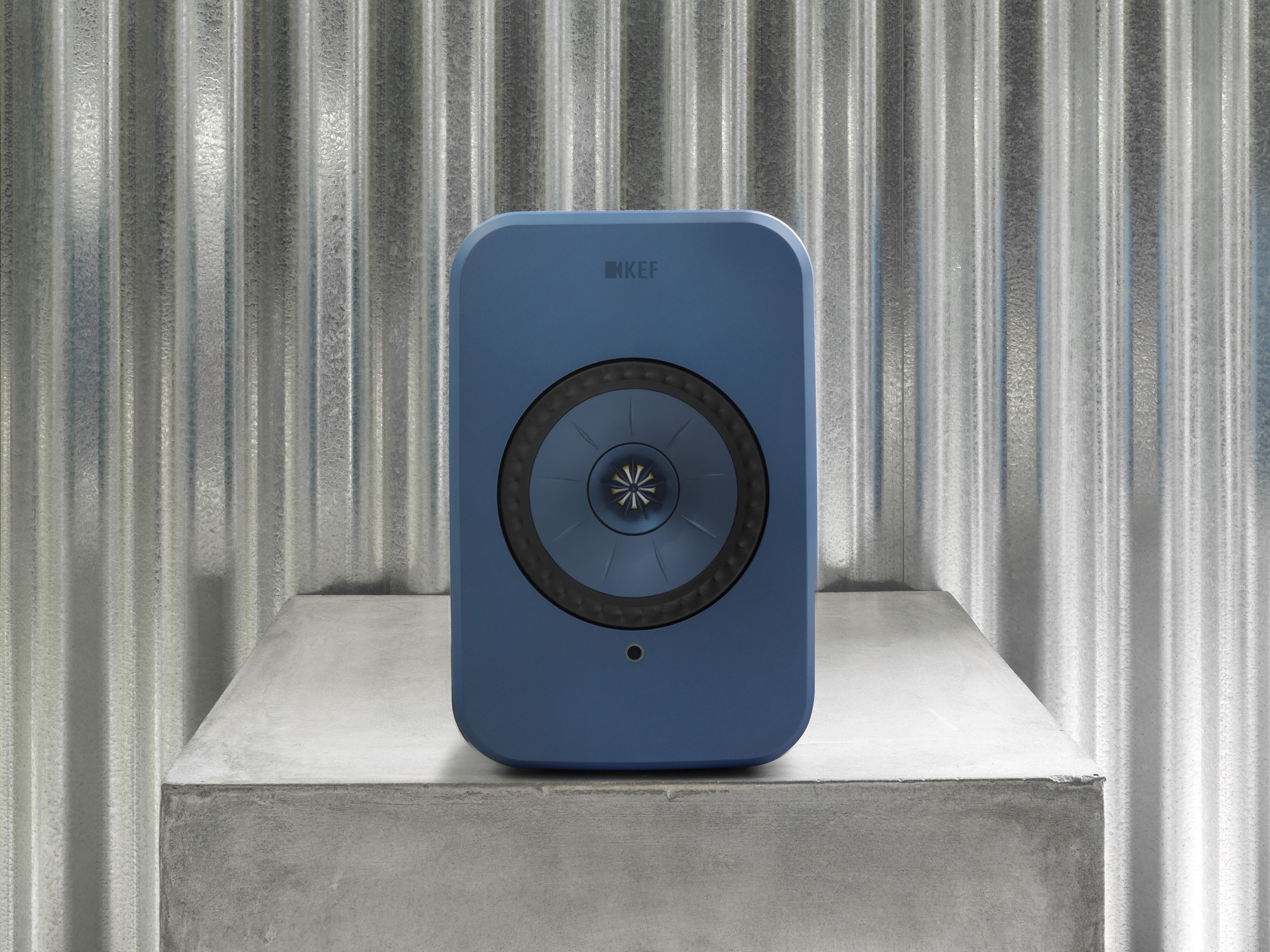
Latency—of which there must be some no matter what due to networking and DSP—is minimal and not a problem when mixing or home-theatering. I could see how many potential users could pair the LSXs with a laptop or iPad for a very mobile personal studio, but you wouldn’t want to do so using Bluetooth. Laying tracks/overdubs via the LSXs via Bluetooth created way too much latency for me, but after a quick switch to the analog input and Cable Mode, processing latency was no longer noticeable or a problem, though, of course, the wireless convenience was lost.
I couldn’t help but wonder how much wireless operation affects performance, so I compared Cable Mode to Bluetooth with only fidelity in mind. The answer is that it’s only a small difference and not one of concern for music listening, home theatre and even routine mix checking/client playback work in the studio. Nonetheless, the LSXs do sound their very best cabled up and at high sample rates; the frequency response was just a little wider, the dynamics just a touch livelier and the soundstage showed more detail, placement and depth. Hearing the LSXs this way proved to me they are pro-capable.
Want more stories like this? Subscribe to our newsletter and get it delivered right to your inbox.
My biggest complaint is in adjusting volume on the LSXs. The remote does so in single-unit increments so that lots of tapping is required to change the volume quickly, but via the app, you can adjust responsiveness to provide as many as 10 increments per tap, which was quite helpful. Also via the app, you can set a max volume limitation, which is also quite useful if your finger should accidentally slip.
I got far more performance out of these LSXs than I reasonably expected as I learned to merge them into my workflow, personal and professional. The only answer as to how KEF can get so much balanced sound out of the diminutive LSXs is clearly DSP. It seems to these ears that improvements in DSP must be behind the monitors sounding so good, as clever cabinet materials, time alignment, smart porting and well-designed amplifier/driver interaction can only explain so much.
At $1,099 per pair, the LSXs are expensive, so this much utility comes at a price. They may be just a little too large for a portable backpack recording studio, but for laptop producers, for control rooms needing a second reference and wireless convenience for their clients, for those who need the versatility of home theater usage, too, and especially those who don’t want an unsightly cable between monitors, these LSXs are an ideal choice.
KEF • us.kef.com

